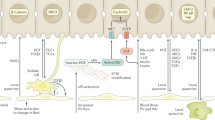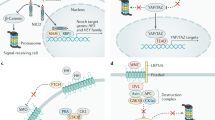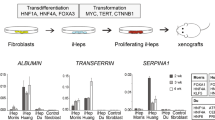Abstract
The work presented here has concerned the study of early, as well as late, enzymic changes occurring during diethylnitrosamine-induced hepatocarcinogenesis and liver regeneration after partial hepatectomy in comparison with normal liver differentiation. Rank correlation analysis of the enzyme data suggested a step-wise retrodifferentiation i.e. that the liver during carcinogenesis first assumed a neonatal enzymic pattern before attaining a foetal enzymic state. Similar enzymic changes were observed in regenerating liver after partial hepatectomy, again there was a step-wise retrodifferentiation of enzymic pattern and at 3 days post hepatectomy the liver had an enzymic pattern similar to both foetal and neoplastic liver. However, in contrast to liver undergoing neoplastic change, the regenerating liver retained the capacity to undergo redifferentiation towards a normal adult biochemical pattern.
This is a preview of subscription content, access via your institution
Access options
Subscribe to this journal
Receive 24 print issues and online access
$259.00 per year
only $10.79 per issue
Buy this article
- Purchase on Springer Link
- Instant access to full article PDF
Prices may be subject to local taxes which are calculated during checkout
Similar content being viewed by others
Rights and permissions
About this article
Cite this article
Curtin, N., Snell, K. Enzymic retrodifferentiation during hepatocarcinogenesis and liver regeneration in rats in vivo. Br J Cancer 48, 495–505 (1983). https://doi.org/10.1038/bjc.1983.222
Issue Date:
DOI: https://doi.org/10.1038/bjc.1983.222



